On August 17, unfortunately, the pioneer of the computer industry passed away. John Ellenby died aged 75. He was known as the “godfather” of the laptop because he and his company Grid Systems released the first flip-top laptop in 1982: the Compass. More than 30 years later, the idea of opening and closing a laptop is still a standard design among laptops.
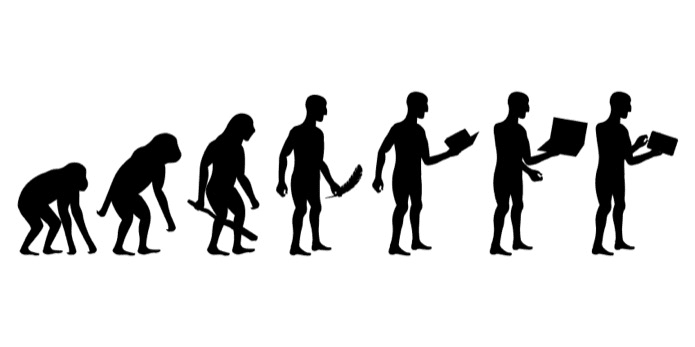
While the Compass wasn’t the first laptop, it was the first with the familiar design we now see everywhere. You could call it the first modern laptop.
The Compass, however, looked very different from the laptops of 2016. It was incredibly chunky, heavy, and expensive at $8,150. Adjusted for inflation, that’s over $20,000 by today’s standards. It also extended far out behind the screen to help with heating issues and to accommodate computer components.
So in honor of this revolutionary design, let’s take a look at some of the major evolutionary changes that laptops have undergone in the years since the Compass. Rest in peace, Ellenby.
1982: Network Compass
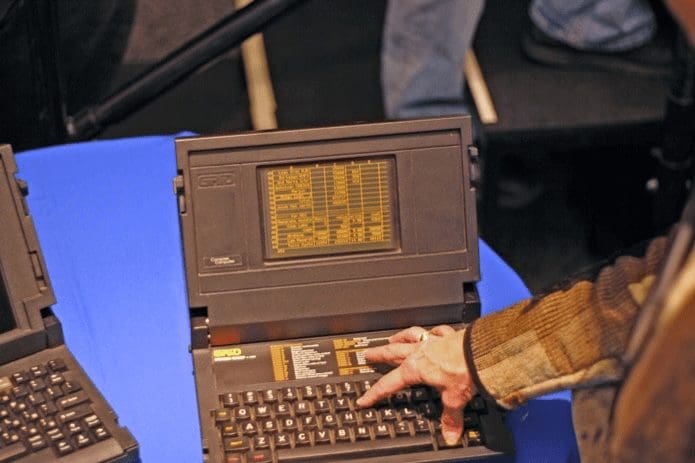

If the Grid Compass were released today, I doubt anyone would even call it a laptop. Still, that’s what it was at the time at a ridiculous 5 kg/11 lbs. The Compass had an Intel 8086 processor with a 320×240 ELD display. It also had a ridiculous price tag of $8,000. Still, this is the design — as thick and ugly as it gets — that started it all for the modern laptop.
If the Grid Compass were released today, I doubt anyone would even call it a laptop.
1989: Apple Macintosh Portable
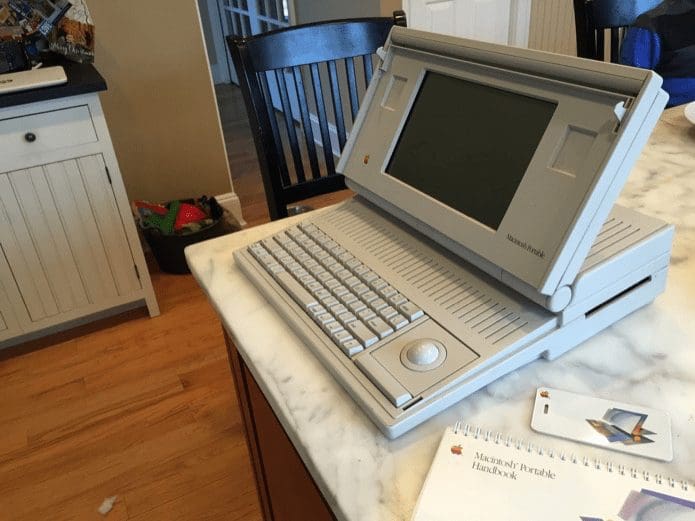

The Macintosh Portable is considered one of Apple’s worst products ever, but it’s a good checkpoint on our evolutionary list. In 1989, Apple released its first portable notebook computer with a 9.8-inch 640 × 400 black-and-white screen, a 40MB hard drive, a trackball, and a price tag of $7,300. The storage space is especially amazing because it’s only enough for a dozen photos, let alone an entire OS. The portable was an ugly off-white color and weighed even more than the Compass at an insane 7.2 kg/16 lbs.
1992: IBM ThinkPad
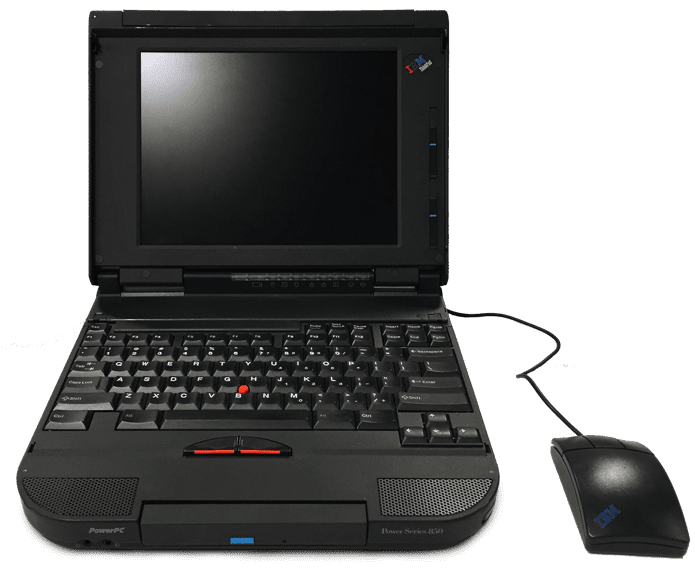

The IBM ThinkPad series became extremely popular after its launch in 1992. It ditched the ugly back of earlier laptops and instead folded completely in half: screen on top, keyboard on the bottom. In addition, the ThinkPad was known for the TrackPoint, a tiny pointing device built into the keyboard for maneuvering the mouse on the screen. The ThinkPad line still exists today under Lenovo.
The ThinkPad was famous for the TrackPoint, a tiny pointing device built into the keyboard for maneuvering the mouse on the screen.
1996: Toshiba libretto


The Toshiba Libretto was the first laptop to be marketed as a subnotebook due to its small size. It was just a small Windows PC about the size of a novel that weighed 840g/1.85lbs. Still sporting a very rugged ’90s look, the Libretto made waves for its portability in a way no laptop had been portable before. It was easy to carry this thing around. Laptops of this size later made a brief comeback in the form of netbooks in the late ’00s, but quickly declined when people decided they preferred tablets.
1999: Apple iBook
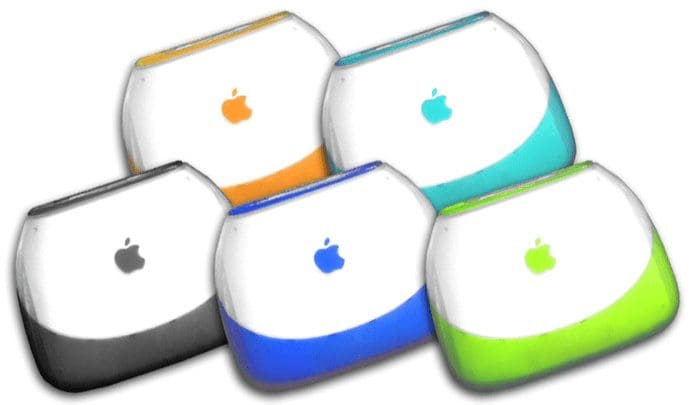

The Apple iBook debuted in 1999 as the “iMac on the go.” Thus begins the era of design philosophy of the best possible brilliance. The iBook was over the top in terms of design, but it was clearly aimed at average consumers rather than savvy business people. Even the color names had to be extravagant, eg blueberry instead of blue. It was also a notable laptop because it was the first to support a Wi-Fi connection instead of a wired connection. As you can imagine, laptop prices have dropped significantly over the past decade since the iBook was available for $1,599 at launch.
The iBook ushers in an era of brighter-better design philosophy.
2003: Dell… Everything


As the evolution of laptop design started to slow down a bit in the mid-2000s, it became more difficult to choose a unique laptop with a big impact. Instead, in the early ’00s, Dell began to dominate the PC market. Everyone knew “Dude, you’re getting a Dell.” slogan. There’s also a decent chance you probably know someone who has had a Dell at some point. At this point, laptop designs were getting thinner and lighter. The screens are extended further towards the edges of the device. Besides, bright bright colors were out, silver was in.
2008: Apple MacBook Air


The reason Apple appears so many times on this list is that it is easily the busiest computer company. Whether you love iOS or Android, you can’t deny that Apple has consistently pushed the envelope in Mac products. In 2008, Apple introduced the thinnest laptop in the world: the MacBook Air. But it became even more infamous for lacking a disk drive, an Ethernet port, and most every other port. It was still a beautiful minimalist product that didn’t compromise battery life, even though it was slow and overpriced at birth. Since then, many laptops have followed the trend towards extreme thinness and a lack of ports.
2012: Microsoft Surface
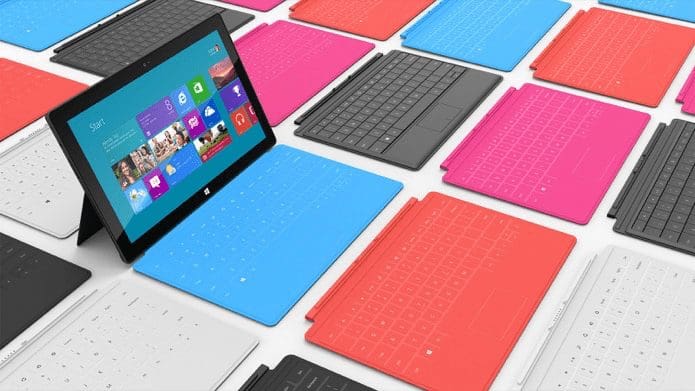

The Microsoft Surface got off to a rough start with frequent complaints of slowness and bugs after its initial release in 2012, but it’s been a decent hit for Microsoft ever since. After years of experimentation by companies, the Surface was one of the first to create a true combination of tablet and laptop. Often considered more of a tablet than a laptop, technically it still functions as a laptop with an adjustable stand and keyboard.
Surface was one of the first to make a true combination of tablet and laptop.
While Microsoft sees the future of computing as a laptop/tablet hybrid, companies like Apple believe the two should remain separate. It will be interesting to see what the market decides in the coming years.
READ ALSO: Why Microsoft should really launch Surface Book in India
Thank you for your reply!